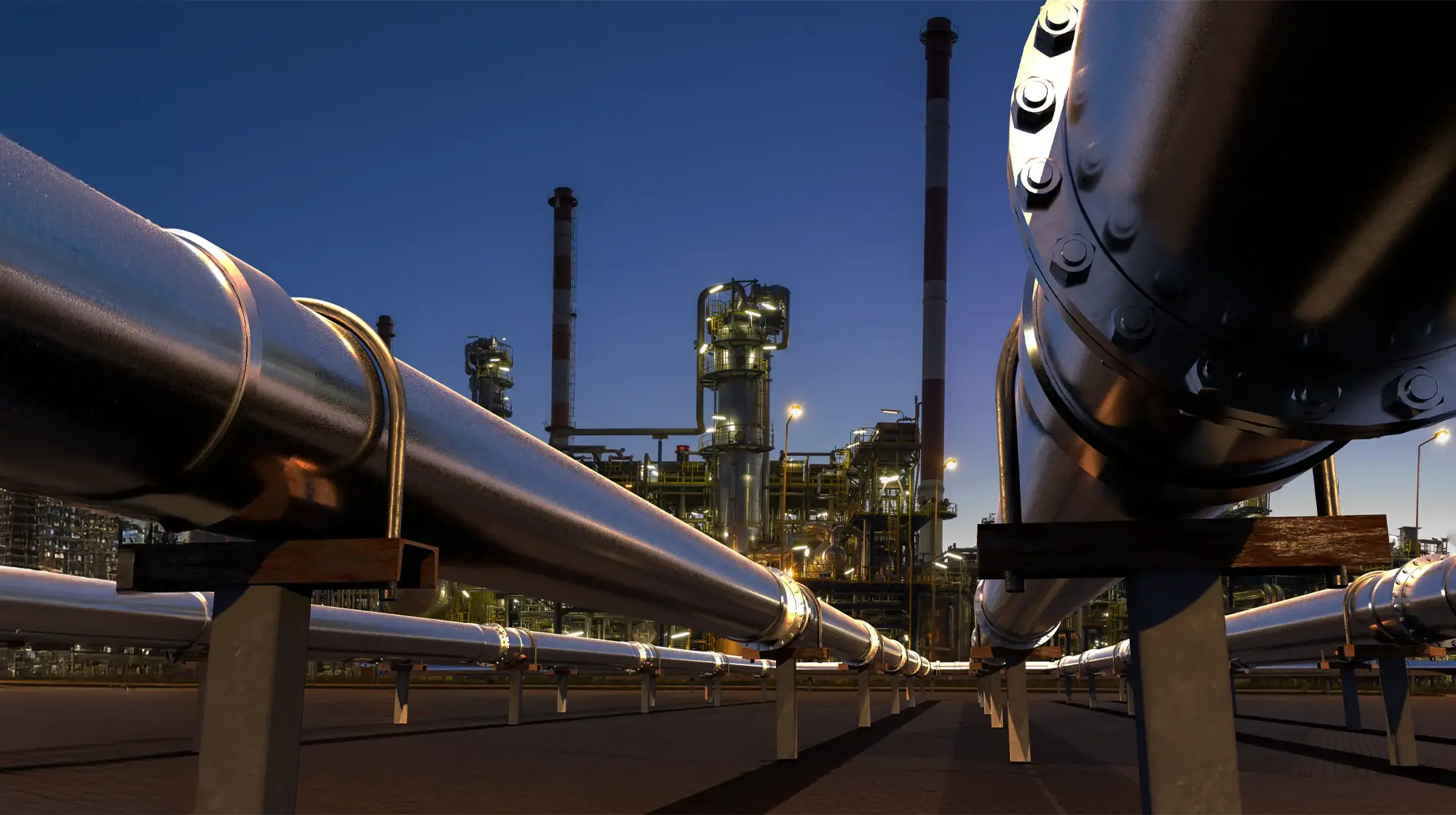Reports related to this article:
Project(s): View 4 related projects in PECWeb
Plant(s): View 2 related plants in PECWeb
Released October 06, 2025 | SUGAR LAND
en
Written by Amir Richani for Industrial Info Resources (Sugar Land, Texas)--Oleoductos del Valle (Oldelval, Argentina) expects to begin construction on its Duplicar Norte Pipeline in November. The crude oil pipeline will will extend from Rincon de los Sauces in Neuquen province to the Allen pumping station in Rio Negro province, expanding transportation capacity from Vaca Muerta's northern oil fields.
Subscribers to Industrial Info's Global Market Intelligence (GMI) Oil & Gas Pipelines Project Database can click here for a list of detailed project reports related to the Duplicar Norte Pipeline.
The 207-kilometer-long asset is expected to have an initial capacity of 220,000 barrels of oil per day (BBL/d) and an estimated cost of approximately US$400 million. Two potential expansions are planned: Phase II, which would take the capacity to 300,000 BBL/d, and Phase III, which would take it to 500,000 BBL/d. The pipeline will have a diameter of 24 inches.
With the asset's construction underway, it is forecasted to begin operations in December 2026 and to begin definitive operations in March 2027, in line with projections.
Oldelval already has signed agreements with companies such as Chevron, Tecpetrol, Pluspetrol and GyP (Gas y Petroleo de Neuquen), which have operations in the northern area of Vaca Muerta and would use the pipeline to transport their output.
Currently, Vaca Muerta has a crude oil capacity of 730,000 BBL/d, according to Ricardo Hosel, the chief executive officer of Oldelval, who spoke at an event in Argentina in early September. Of this, 180,000 BBL/d is part of the Oleoducto Transandino pipeline (which connects Argentina to Chile), and the remaining 550,000 BBL/d represents the capacity to move oil from the area to the Atlantic coast.
In August, the Neuquen Basin, dominated by Vaca Muerta, had a production of approximately 600,000 BBL/d, still within the range permitted by the existing infrastructure. However, the area's output is forecasted to continue growing. Argentina has been consistently beating output records this year, thanks to the expansion seen in Vaca Muerta.
Although the shale formation faced significant midstream bottlenecks in previous years, new infrastructure is helping companies increase production. New projects such as Duplicar Norte and the Vaca Muerta Oil Sur pipeline will allow the formation to reach its full potential. Once both pipelines are operational by late 2026 or early 2027, the non-conventional formation will have a transport capacity of 1.3 million BBL/d.
The Vaca Muerta Sur oil pipeline is progressing, with projected completion at the end of 2026. For more information, see October 3, 2025, article - Argentina's Vaca Muerta Sur Oil Pipeline Notches Up Progress.
Industrial Info Resources (IIR) is the leading provider of industrial market intelligence. Since 1983, IIR has provided comprehensive research, news and analysis on the industrial process, manufacturing and energy related industries. IIR's Global Market Intelligence (GMI) platform helps companies identify and pursue trends across multiple markets with access to real, qualified and validated plant and project opportunities. Across the world, IIR is tracking more than 200,000 current and future projects worth $17.8 trillion (USD).
Subscribers to Industrial Info's Global Market Intelligence (GMI) Oil & Gas Pipelines Project Database can click here for a list of detailed project reports related to the Duplicar Norte Pipeline.
The 207-kilometer-long asset is expected to have an initial capacity of 220,000 barrels of oil per day (BBL/d) and an estimated cost of approximately US$400 million. Two potential expansions are planned: Phase II, which would take the capacity to 300,000 BBL/d, and Phase III, which would take it to 500,000 BBL/d. The pipeline will have a diameter of 24 inches.
With the asset's construction underway, it is forecasted to begin operations in December 2026 and to begin definitive operations in March 2027, in line with projections.
Oldelval already has signed agreements with companies such as Chevron, Tecpetrol, Pluspetrol and GyP (Gas y Petroleo de Neuquen), which have operations in the northern area of Vaca Muerta and would use the pipeline to transport their output.
Currently, Vaca Muerta has a crude oil capacity of 730,000 BBL/d, according to Ricardo Hosel, the chief executive officer of Oldelval, who spoke at an event in Argentina in early September. Of this, 180,000 BBL/d is part of the Oleoducto Transandino pipeline (which connects Argentina to Chile), and the remaining 550,000 BBL/d represents the capacity to move oil from the area to the Atlantic coast.
In August, the Neuquen Basin, dominated by Vaca Muerta, had a production of approximately 600,000 BBL/d, still within the range permitted by the existing infrastructure. However, the area's output is forecasted to continue growing. Argentina has been consistently beating output records this year, thanks to the expansion seen in Vaca Muerta.
Although the shale formation faced significant midstream bottlenecks in previous years, new infrastructure is helping companies increase production. New projects such as Duplicar Norte and the Vaca Muerta Oil Sur pipeline will allow the formation to reach its full potential. Once both pipelines are operational by late 2026 or early 2027, the non-conventional formation will have a transport capacity of 1.3 million BBL/d.
The Vaca Muerta Sur oil pipeline is progressing, with projected completion at the end of 2026. For more information, see October 3, 2025, article - Argentina's Vaca Muerta Sur Oil Pipeline Notches Up Progress.
Industrial Info Resources (IIR) is the leading provider of industrial market intelligence. Since 1983, IIR has provided comprehensive research, news and analysis on the industrial process, manufacturing and energy related industries. IIR's Global Market Intelligence (GMI) platform helps companies identify and pursue trends across multiple markets with access to real, qualified and validated plant and project opportunities. Across the world, IIR is tracking more than 200,000 current and future projects worth $17.8 trillion (USD).


